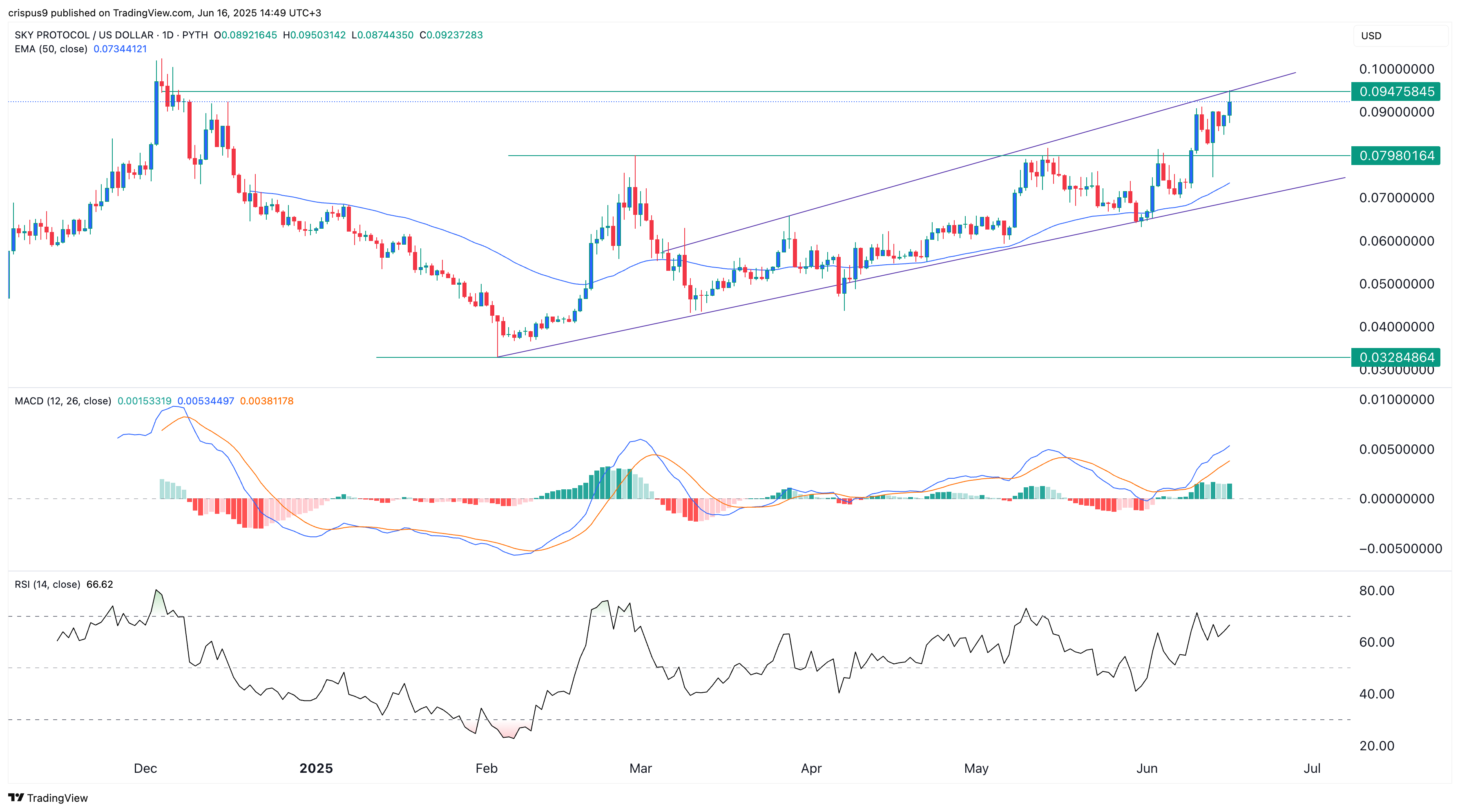Sky Protocol token has bounced back in the past few months, as most large-cap decentralized finance coins jumped.
Sky Protocol (SKY) price jumped to a high of $0.09475 on Monday, June 16, up 190% from its lowest point this year. This surge has pushed its market capitalization to over $1.95 billion.
Sky token’s rally coincided with the recent surge of other large DeFi coins. Aave (AAVE) has jumped over 147% from its lowest point in April, while Jito (JTO) has soared by 50% from the same period.
Sky has jumped even as third-party data shows that its network’s growth is decelerating.
DeFi Llama data shows that the total value locked in its platform has dropped to 1.87 million ETH, its lowest level since June 2020. It has declined from the year-to-date high of 4 million tokens and the all-time high of nearly 6.98 million coins.
Sky Protocol’s revenue has also slowed in the past few months. It peaked at $28.37 million in December last year and fell to $17 million in May.
On the positive side, Nansen data shows that smart money and whale accumulation have accelerated in the last 30 days. Smart money holdings have jumped 148% to 3.28 million, while whale holdings have surged 2,246% to 252.90 million.
This buying has also pushed exchange balances down 8% to 208 million. Falling exchange balances suggest that investors are largely moving their tokens from exchanges to self-custody wallets.
Formerly known as Maker, Sky is a yield-generating platform that lets users save their USDS stablecoin and access yields. Its website places the Sky Savings Rate at 4.50%.
Sky price technical analysis

The daily chart shows that SKY price bottomed at $0.03285 in February. It has formed an ascending channel, comprising higher highs and higher lows since then.
The token moved above the key resistance level at $0.07980, the highest swing on February 28. It has also moved above the 50-day moving average.
Similarly, the MACD and the Relative Strength Index have continued rising, with the latter nearing the overbought level.
The most likely scenario is that Sky price drops and retests the key support at $0.07980. A move above the upper side of the channel would signal more gains to the psychological point at $0.10.









